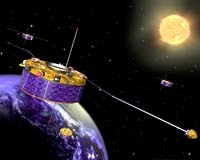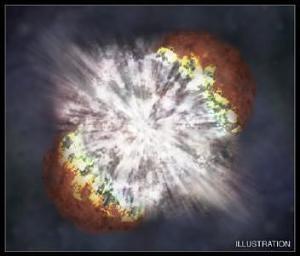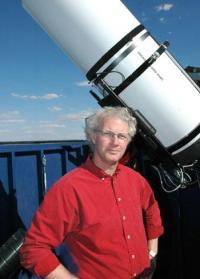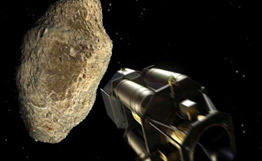The first thing an alien race is likely to hear from Earth is chirps and whistles, a bit like R2-D2, the robot from
Star Wars. In reality, they are the sounds that accompany the aurora.
Now ESA's Cluster mission is showing scientists how to understand this emission and, in the future, search for alien worlds by listening for their sounds.

|
| ©ESA
|
| Artist's impression of the Cluster constellation. ESA's mission Cluster consists of four identical spacecraft flying in formation between 19000 and 119000 km above the Earth. They study the interaction between the solar wind and Earth's magnetosphere, or the Sun-Earth connection in 3D.
|
Scientists call this radio emission the Auroral Kilometric Radiation (AKR). It is generated high above the Earth, by the same shaft of solar particles that then causes an aurora to light the sky beneath.
For decades, astronomers had assumed that these radio waves travelled out into space in an ever-widening cone, rather like light emitted from a torch. Thanks to Cluster, astronomers now know this is not true.
By analysing 12 000 separate bursts of AKR, a team of astronomers have determined that the AKR is beamed into space in a narrow plane. This is like placing a mask over the torch with just a small slit in the middle for light to escape.
"We can now determine exactly where the emission is coming from," says Robert Mutel, University of Iowa, who conducted the three-year study with colleagues. For each of the AKR bursts they analysed, the astronomers pinpointed its point of origin to regions in Earth's magnetic field just a few tens of kilometres in size. These were located a few thousand kilometres above where the light of the aurora is formed.


